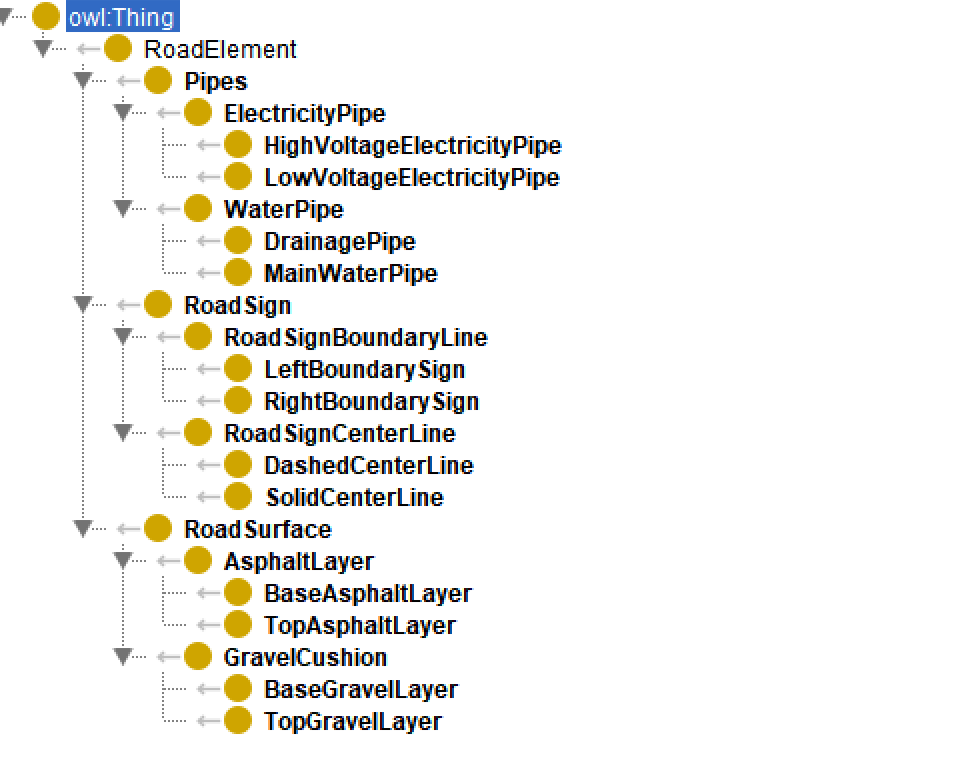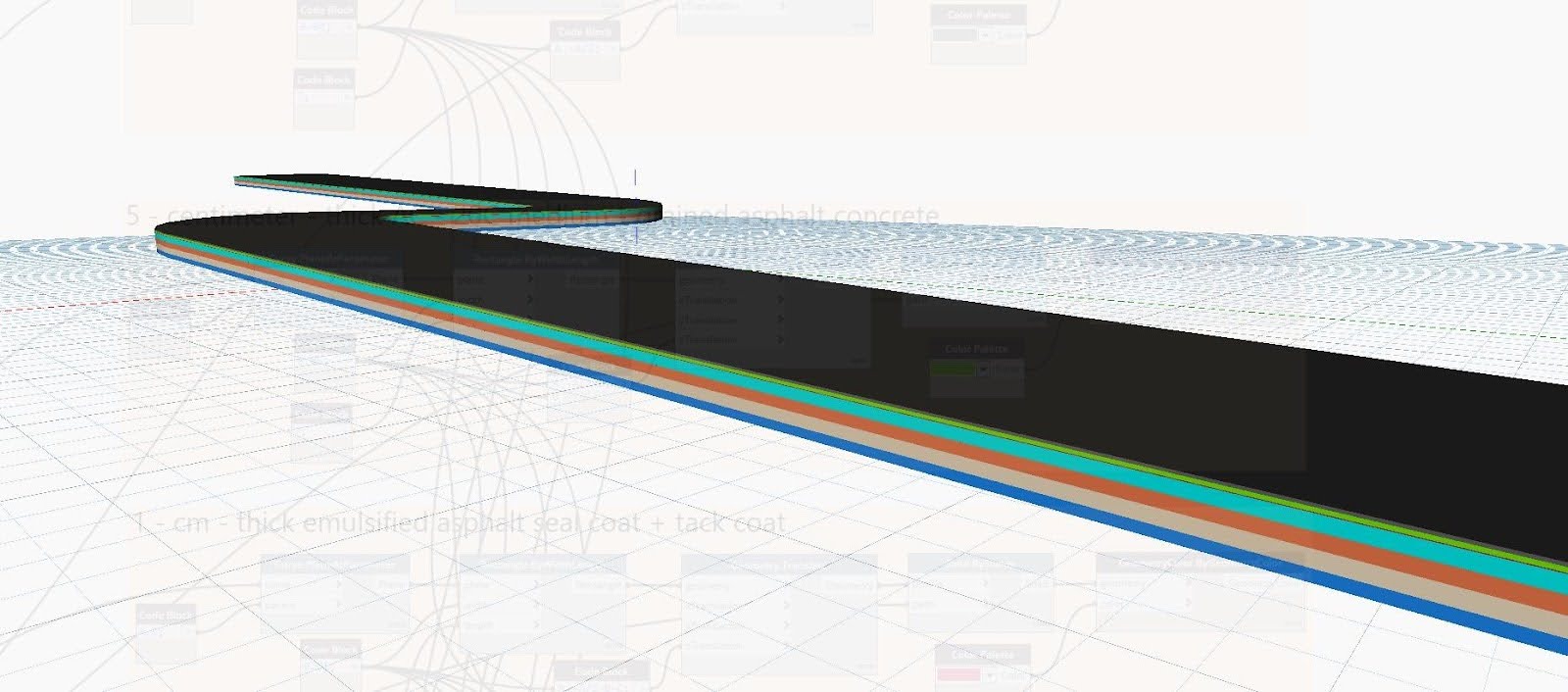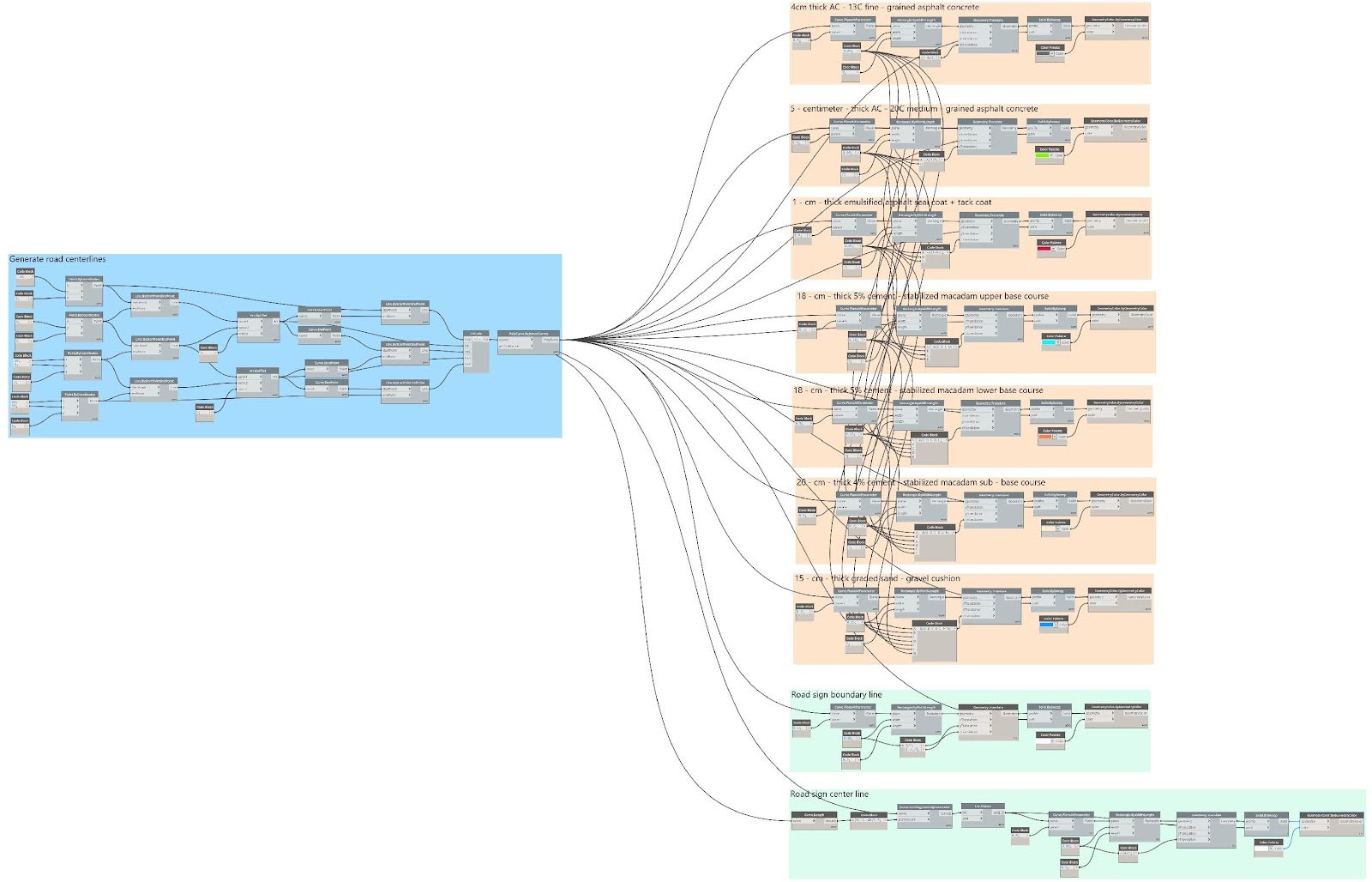1. Introduction
Modern road construction involves the integration of multiple infrastructural components to create safe, efficient, and sustainable roadways. These components range from the pipes for utilities like water and electricity to the road surface layers and the installation of road signs. To efficiently manage and design such infrastructure, utilizing an ontology model provides a structured framework that captures the relationships and hierarchies between these various elements.
We try to explores a road construction ontology model and discusses its core components, which include pipes, road surfaces, and road signs. The goal is to highlight how ontology modeling can help integrate and visualize the various components involved in road construction, facilitating better planning, design, and maintenance processes.
The ontology model for road construction provides a structured approach to managing and designing the multiple components that make up a modern roadway. By defining the relationships between pipes, road surfaces, and road signs, and integrating data from various sources, this model helps streamline road construction projects. Furthermore, it facilitates better decision-making by considering sustainability and long-term maintenance needs.
As road construction projects become increasingly complex, ontology-based models will be instrumental in ensuring that roads are not only functional but also durable, sustainable, and safe for all users. The use of ontology in this field is a step towards more intelligent, integrated, and efficient infrastructure planning and management.
Dynamo Design Challenge
Balancing Road Structural Stability and Service Life
Road design requires a delicate balance between structural stability, service life, and cost-effectiveness. For example, highways must support high load-bearing capacity to accommodate heavy traffic flow, while mountain roads need to adapt to complex terrains, ensuring driving safety and minimizing geological hazards. Therefore, optimizing structural design according to environmental conditions and usage demands is essential.
Load Analysis
- Pavement Load: Primarily affected by vehicle loads and temperature fluctuations, which can lead to cracking, deformation, or rutting.
- Base and Sub-base Load: These layers determine the pavement’s resistance to deformation, ensuring long-term stability under continuous traffic loads.
- Subgrade Load: Soil conditions must be analyzed to assess their impact on roadbed stability, including bearing capacity, drainage properties, and compressibility, to prevent settlement or lateral movement.
Material Efficiency and Adaptability
Selecting the appropriate materials is crucial for durability, maintenance costs, and environmental adaptability. For example:
- Asphalt Concrete: Offers flexibility and fatigue resistance, making it ideal for regions with significant temperature variations while reducing crack formation.
- Cement Concrete: Provides superior load-bearing capacity, suitable for heavy-duty roads but requires precise construction and expansion joint design to prevent thermal cracking.


